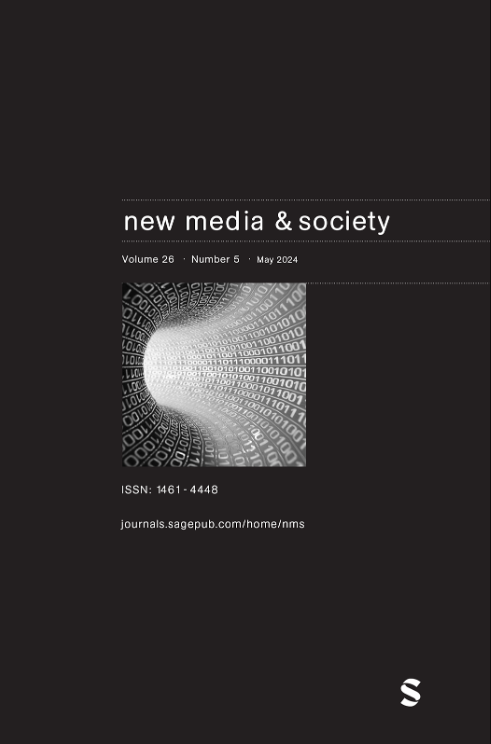Navigating beyond places: The significance of navigation tools in everyday media use
IF 4.3
1区 文学
Q1 COMMUNICATION
引用次数: 0
Abstract
This study examines navigation tools as key mediators of spatial perception, mobility, and digital infrastructures, contributing to scholarship on mediatization, geomedia, and surveillance studies. Navigation apps like Google Maps do not merely facilitate wayfinding; they actively shape spatial experiences, decision-making, and social interactions. Using a mixed-methods approach, we combined real-time activity tracking via the “MapRecorder” tool with qualitative interviews to analyze how users engage with Google Maps. Our findings reveal that navigation tools function as interfaces of spatial production, social connection, and data extraction, embedding themselves in everyday media repertoires. We identify four key usage patterns—search, place, directions, and map view manipulation—demonstrating that navigation is increasingly entangled with broader digital habits. In addition, the data suggested a paradoxical relationship between user convenience and concerns over dataveillance, contributing to debates on privacy resignation and the platformization of spatial control. By foregrounding these tensions, our study extends discussions on the deep mediatization of space, the role of geomedia in shaping mobility, and the sociotechnical power of digital navigation infrastructures.超越地点的导航:导航工具在日常媒体使用中的意义
本研究考察了导航工具作为空间感知、移动性和数字基础设施的关键媒介,为媒介化、几何图形和监视研究做出了贡献。像谷歌Maps这样的导航应用程序不仅方便了寻路;它们积极地塑造空间体验、决策和社会互动。使用混合方法,我们通过“MapRecorder”工具将实时活动跟踪与定性访谈相结合,以分析用户如何与谷歌地图互动。我们的研究结果表明,导航工具作为空间生产、社会联系和数据提取的接口,嵌入到日常媒体库中。我们确定了四种关键的使用模式——搜索、位置、方向和地图视图操作——表明导航越来越多地与更广泛的数字习惯纠缠在一起。此外,这些数据表明,用户便利性与对数据监控的担忧之间存在矛盾关系,从而引发了关于隐私辞职和空间控制平台化的辩论。通过突出这些紧张关系,我们的研究扩展了对空间深度媒介化、几何形状在塑造移动性中的作用以及数字导航基础设施的社会技术力量的讨论。
本文章由计算机程序翻译,如有差异,请以英文原文为准。
求助全文
约1分钟内获得全文
求助全文
来源期刊

New Media & Society
COMMUNICATION-
CiteScore
12.70
自引率
8.00%
发文量
274
期刊介绍:
New Media & Society engages in critical discussions of the key issues arising from the scale and speed of new media development, drawing on a wide range of disciplinary perspectives and on both theoretical and empirical research. The journal includes contributions on: -the individual and the social, the cultural and the political dimensions of new media -the global and local dimensions of the relationship between media and social change -contemporary as well as historical developments -the implications and impacts of, as well as the determinants and obstacles to, media change the relationship between theory, policy and practice.
 求助内容:
求助内容: 应助结果提醒方式:
应助结果提醒方式:


